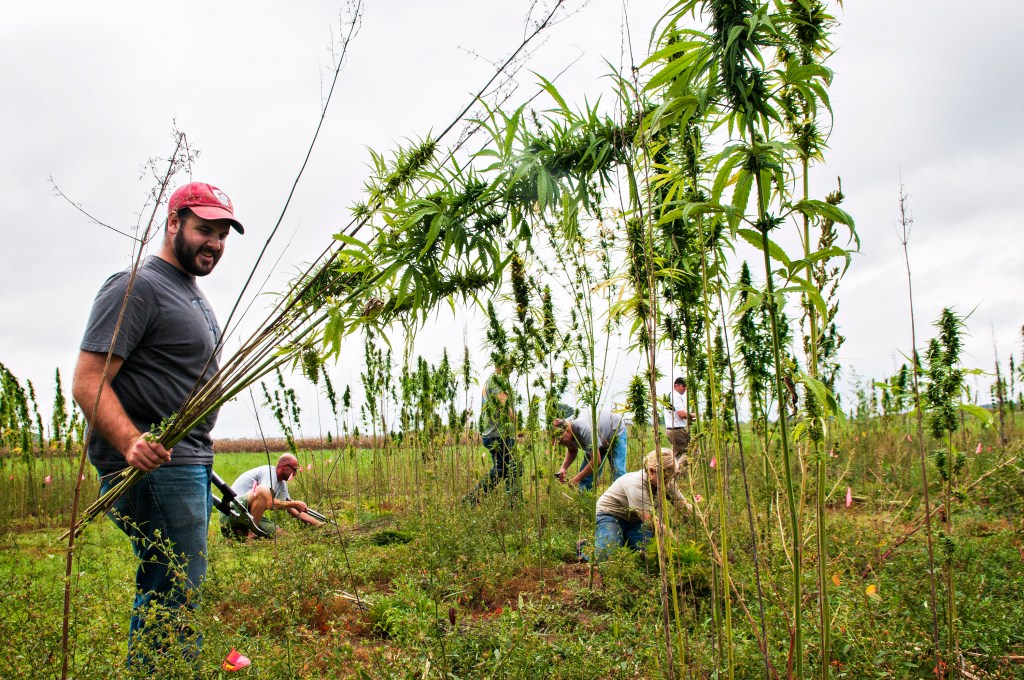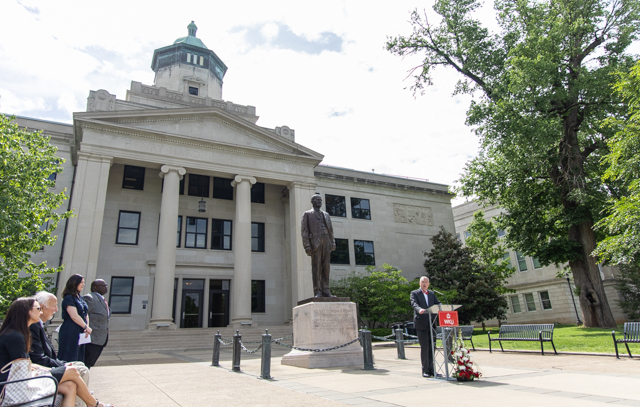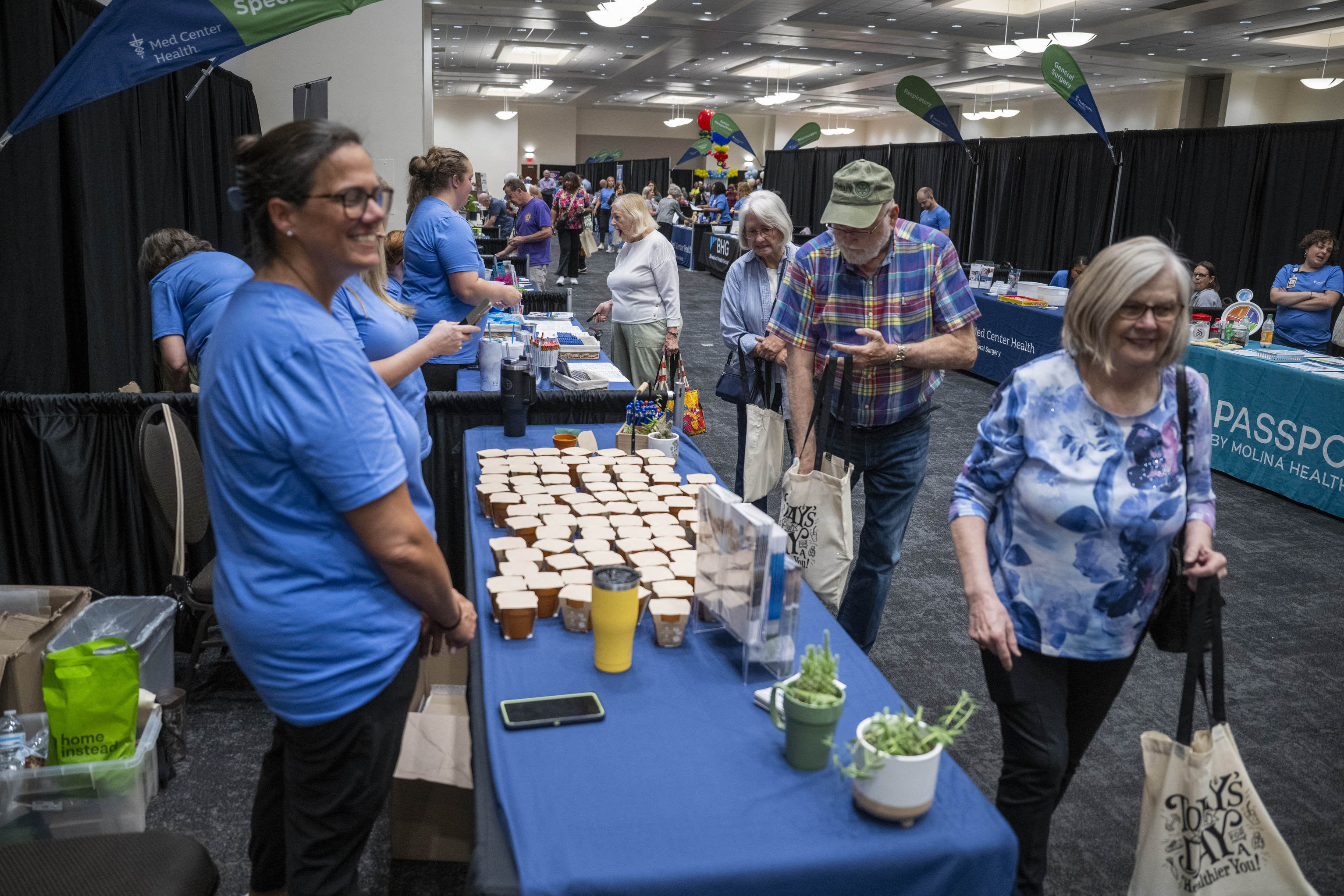Hemp harvest
Published 11:24 am Friday, September 12, 2014

- Western Kentucky University agriculture graduate student Brett Maxwell (left) of Plant City, Fla., and other student volunteers and faculty harvest hemp plants Thursday, September 11, 2014, at the WKU Farm. (Bac To Trong/Daily News)
Student volunteers and staff at Western Kentucky University began harvesting the university’s first hemp crop Thursday.
Hemp is related to marijuana, and both contain the chemical that gives marijuana users a high – tetrahydrocannabinol, or THC – but the trace amounts in hemp aren’t enough to produce a high.
A provision in the federal Agricultural Act of 2014 allowed state agriculture departments and institutions of higher learning to grow industrial hemp as part of pilot programs to study hemp growth and marketing. WKU is one of a number of state universities that have grown hemp this year.
Before that act was signed into law, Kentucky passed Senate Bill 50 in 2013 to allow the cultivation of industrial hemp. The bill set up a framework for cultivation if it were to become legal on the federal level. It became law without Gov. Steve Beshear’s signature.
Volunteers cut the hemp by hand Thursday.
It will later be shocked and left in the field, said Paul Woosley, an assistant professor in the WKU Agriculture Department. Exposure to the elements will help to separate the fiber of the plant. The process is called retting.
“We’re doing it the old-fashioned way,” he said.
In some countries where hemp is a cash crop, specialized machinery harvests and processes the product, but that wasn’t available for WKU’s crop.
The crop was planted June 3 at the WKU Farm as a joint project with the University of Kentucky. Thirteen different types of hemp were planted at the farm.
The hemp harvested Thursday will be used to collect data on fiber production of the crop and optimum nitrogen levels needed to grow it.
Another set of hemp plants will be harvested later to collect data on seed production, Woosley said.
Data will be shared with staff at UK, where it will be compiled and sent to the Kentucky Department of Agriculture, he said.
The data gathered at WKU will help to determine which seeds and fertilization rates are most successful with the type of soil common in the area, Woosley said.
“We have a drastically different soil type than what’s around Lexington,” he said.
That information could be helpful to farmers in the future, Woosley said.
“Really, regardless of how good a farmer you are, the plant is only capable genetically to produce so much,” he said.
The plant must ultimately be destroyed, Woosley said.
Though the market for hemp is yet uncertain, it is versatile in its uses, agronomy professor Todd Willian said. The pith of the plant can be used for high-quality bedding, while fibers can be used in products ranging from clothing to concrete. The seeds of the plant also have many uses.
“It’s got a lot of potential products to be made from it,” he said.
Into the early 20th century, Kentucky was a leading producer of hemp. But in the 1930s, laws began to limit production. A marijuana tax passed in 1937 taxed hemp growers at a level that made it unfeasible to grow.
During World War II, hemp was grown for the war effort, but in 1970, it was grouped with marijuana and outlawed.
The hemp that germinated grew well at the WKU farm, Willian said.
However, plant population was lower than expected because seed was planted during a period of drought, Willian said.
Planting later in the season because seed delivery was delayed probably resulted in shorter plants than would normally be grown, he said. Some of the plants were 11 feet tall.
— Follow government beat writer Katie Brandenburg on Twitter at twitter.com/BGDNgovtbeat or visit bgdailynews.com.






